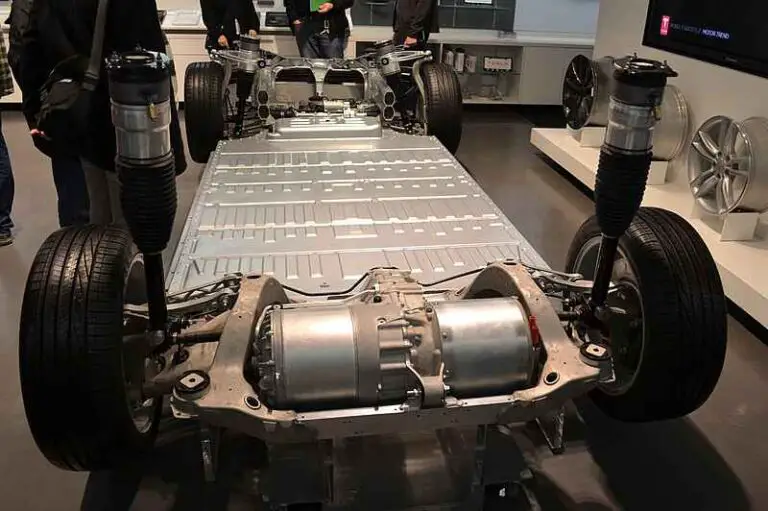3 Microgrid Types and Their Characteristics Explained
Microgrid types are; off-grid, grid-connected, and integrated microgrids. They are categorized based on configuration and mode of operation.
This article discusses microgrid types and their characteristics, as follows;
1). Off-Grid Microgrid (as one of the Microgrid Types)
Off-grid microgrid is an isolated, self-sufficient microgrid system, which is used to fill the power supply gap in areas beyond the reach of regional utility grids.
It may also be referred to as ‘isolated’ or ‘remote’ microgrid, and is accordingly suited to remote areas, usually in rural and developing settings [5].
In order to operate, an off-grid microgrid must be connected to a power source; which could be in the form of a large electric generator, or a small-scale power plant. The power source is the only external system that the isolated microgrid relies upon.
One of the advantages of microgrids of this type is their ability to maximize the use of renewable energy resources [1]. Due to their remote and small-scale nature, off-grid microgrids can work effectively with wind farms, solar energy systems, small-scale hydroelectricity facilities, and geothermal plants, among others.
Off-grid microgrid systems are also relatively flexible, in terms of their ability to be used in isolation, or in collaboration with other systems.
Energy storage functionalities are often incorporated into off-grid systems, in the form of deep cycle batteries among other storage equipment.
In case of future introduction of a regional utility grid, large-scale smart grid, or other microgrids, the off-grid system can be integrated with these systems, to operate collaboratively. Such changes transform the off-grid system into either a grid-connected, or an integrated microgrid, depending on specific conditions.
Lastly, off-grid microgrids can be equipped with analytical functions, data management and artificial intelligence capabilities, to make them operate as smart systems.

2). Grid-Connected Microgrid
As the name implies, grid-connected microgrid systems are connected to a regional utility grid.
Such an arrangement is likely to occur where the microgrid was first used as an off-grid isolated system, before the introduction of a conventional utility grid.
The role of the grid-connected microgrid is usually a supportive one, so that it acts as a backup power distribution system to the larger grid, which functions as a main distribution system.
Isolated microgrids are converted to grid-connected microgrids especially where the demand for electricity is high and/or rapidly increasing, or where the sustainability of an isolated system is threatened by environmental factors like natural hazards, or geographic and socioeconomic factors like the location(s) of power plants (which must act as power sources for the microgrid).
The grid-connected microgrid is usually configured so that its voltage supply is synchronous with that of the main utility grid [4].
Due to larger complexity and scale, the environmental impact of grid-connected systems is generally more significant than for isolated microgrids. However, the capacity of grid-connected systems, as well as their reliability, is much higher than for isolated systems.
3). Integrated Microgrid (as one of the Microgrid Types)
Integrated microgrid is any microgrid system that operates as part of an elaborate network of integrated and interconnected components.
These ‘components’ are usually other electricity facilities, which could range from energy management systems, sensors, power plants, smart grids and meters, to smart homes and buildings.
Usually, the goal and function of an integrated microgrid is to establish and resilient, multidimensional and distributed electricity generation and transmission network. It is also designed to maximize flexibility in the approach to energy conservation and consumption, to mitigate the prospect of resource depletion.
Integrated microgrids may receive power simultaneously from a variety of renewable and non-renewable sources, including less-common, small-scale options like bioenergy plants [3].
Another context in which a microgrid can be referred to as ‘integrated’ is in relation to buildings. Building-integrated microgrids are integrated with electrical components within a building.

Conclusion
The microgrid types are;
1. Off-Grid Microgrid
2. Grid-Connected Microgrid
3. Integrated Microgrid
References
1). Boche, A.; Foucher, C.; Villa, L. F. (2022). “Understanding Microgrid Sustainability: A Systemic and Comprehensive Review.” Energies 2022, 15(8), 2906. Available at: https://doi.org/10.3390/en15082906. (Accessed 21 October 2022).
2). Jiang, Q.; Xue, M.; Geng, G. (2013). “Energy Management of Microgrid in Grid-Connected and Stand-Alone Modes.” Power Systems, IEEE Transactions on 28(3):3380-3389. Available at: https://doi.org/10.1109/TPWRS.2013.2244104. (Accessed 19 October 2022).
3). Kirchner, D.; Thrän, D. (2019). “Integrating Biogas Plants into Microgrids for Bridging Temporary Power Supply Interruptions.” Chemical Engineering & Technology 42(9). Available at: https://doi.org/10.1002/ceat.201800154. (Accessed 21 October 2022).
4). Shah, M. S.; Roslan, M. A.; Ismail, B. (2020). “Microgrid synchronization using power offset through a central controller.” Journal of Physics Conference Series 1432(1):012019. Available at: https://doi.org/10.1088/1742-6596/1432/1/012019. (Accessed 21 October 2022).
5). Tran, Q.; Davies, K. L.; Sepasi, S. (2021). “Isolation Microgrid Design for Remote Areas with the Integration of Renewable Energy: A Case Study of Con Dao Island in Vietnam.” Clean Technologies 3(4):804-820. Available at: https://doi.org/10.3390/cleantechnol3040047. (Accessed 21 October 2022).
